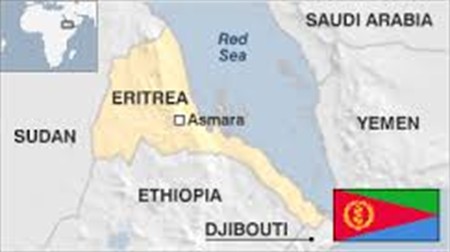Translation and Localization for Africa: Eritrea
Eritrea is a small African nation nestled between Ethiopia and Sudan and stretches along the Red Sea; across from Saudi Arabia and Yemen. Little is known about this country and although it is located in a very strategic area at the Horn of Africa, it is considered one of the most obscure nations in the world. This blog will provide some insight for the African country of Eritrea.
In 1993, Eritrea won its independence from Ethiopia after 30 years of war, but tensions are still running high and the borders remain closed for both nations. The Eritrean government, basically a one-party state, is further manipulating the situation and its people, and rampant human rights violations happen in a total lack of rule of law. According to Human Rights Watch, arbitrary arrests and detentions and mysterious and inexplicable disappearances are common. Human rights abuses like torture while in detention and no free independent press have caused hundreds of thousands of Eritreans to flee their country. Promised reforms have not materialized and long periods of conflicts and severe droughts have affected the economy to such a negative degree that Eritrea is considered one of the poorest nations in Africa.

Eritrean Demographics
- Population of 6,802,304 (2016) with a population growth rate of 2.3% (according to Index Mundi).
- Over 61% of the population is 24 years or younger.
- Asmara, the capital is the only major city with a population of approximately 712,000.
- Only 21% of the population is considered urban, the remainder live in mostly rural areas.
- Fertility rates remains high with an average of 4.14 children born per woman.
- There is a plethora of food, waterborne and vector borne diseases and the infection risks are high.
- The nine recognized ethnic groups are: Tigrinya, Tigre, Saho, Kunama, Rashaida, Bilen, Afar, Beni Amir, and Nera.
- The religions are: Muslim, Coptic Christian, Roman Catholic and Protestant.
Eritrean Languages
- Tigrinya, Arabic and English are the official languages.
- Other languages spoken: Tigre, Kunama, Afar, Somali, and other Cushitic languages.
- The literacy rate among the total population is almost 69%, but much higher among males (79.5%) than females (59%).
Eritrean Culture
- Eritrea’s culture is closely linked to that of Ethiopia’s and they share most of the same ethnic groups.
- There is a highland culture stretching into the Eritrean highland plateau that is predominantly Christian Orthodox and culturally and linguistically homogenous.
- The lowlands, which are predominantly Muslim, are linguistically more heterogeneous.
- In the highlands, people live in small villages and sustain themselves with agriculture.
- People in the lowlands live semi-nomadic lives.
- In the highlands, injerra, a bread that resembles a pancake, is eaten with a meat or vegetable-based sauce called tsebhi or wat. In the lowlands, a porridge made from sorghum called asida is a common dish.
- In more urban areas there is a strong Italian influence and all restaurants serve pasta.
Eritrean Consumers
- Eritrean consumers have access to landline and mobile phones only though EriTel, the sole operator of telephone services in the country.
- Internet access is offered by several providers, but the systems are very inadequate and the government is looking for international tenders to improve the current system.
- There are approximately 58,000 land lines and 241,900 mobile phones in use, which represent roughly 5% of the population.
- There are only 2 state-owned radio networks and one state-owned TV station with around 1,000 TVs installed in homes.
- There are only 48,700 internet users in Eritrea, or 0.8% of the population, ranking it 211th in terms of internet users in the world.
- With an estimated GDP of $5 billion in 2015, household consumption accounts for 75.1% and government consumption for 18.4%.
- Major industries are food processing, beverages, clothing and textiles.
- Imported goods include machinery, food, and petroleum products.

Eritrea’s Future
Hamelmalo Agricultural College
- Eritrea unfortunately remains a very isolated and economically stagnant country.
- Eritrea’s economy depends entirely on agricultural production with 75% of the population engaged in agricultural production and about 20% of the population considered to be traders and laborers.
- Eritrea’s severely underdeveloped economy produces no major goods for export and only limited livestock is exported to the Arabian Peninsula.
- The only marginal industry provides textiles, food products, and building materials to the domestic market.
- There are some development efforts, like the expansion of Eritrea’s largest college, the Eritrea Institute of Technology, which is funded by the government and People’s Republic of China, and the expansion of the Hamelmalo Agricultural College funded partially by the African Development Bank.
- Contingent upon stability and peace (Eritrea has been governed under emergency rule since 1998) as well as sustainable development efforts, Eritrea may be able to develop and grow a tourism industry anchored around the Dahlak Islands in the Red Sea.
Summary
Struggling for stable independence and peace, this small nation has continuously rejected development aid projects and has expelled the majority of international NGOs. Eritrea will continue to be challenged by its dire economic outlook, poverty, isolation, political climate and rampant human rights violations. The exodus of the Eritrean people continues and only drastic reforms will allow this country to carve a path to prosperity and growth.
Sources:
https://www.hrw.org/africa/eritrea
